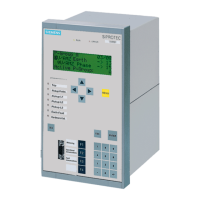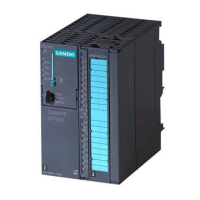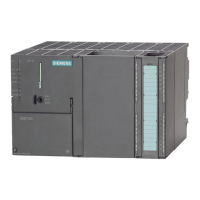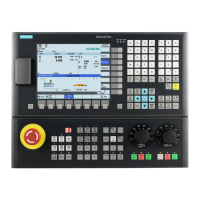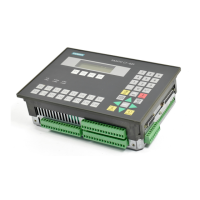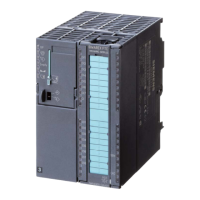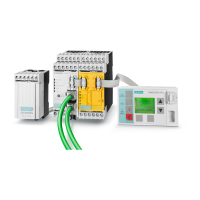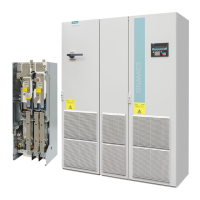3 Parameterization
3.3 Parameterizing the IO Controller
76 SIPROTEC 4, Communication Module PROFINET IO, Communication Profile
C53000-L1840-C360-1, Edition 08.2012
During transition from STOP to RUN, the data from the cyclic telegrams are accepted and output for the IO
modules in output direction once the IO controller has restored the IOPS for these IO modules to "good".
If you want the outputs of the SIPROTEC device to remain unaffected during transition from STOP to RUN, the
idle state (value "00") is to be output at the associated bit positions in the output telegram (see also the infor-
mation on executing switching operations in Chapter 2.9).
3.3.2.2 Periphery Access Commands
The S7-CPUs can access data received by the connected devices via PROFINET IO or write data to these de-
vices using periphery access commands in the CPU program.
To read a measured value (float value, 4 bytes, see Chapter 2.3.4) from the SIPROTEC device, the command
L PID x
is used, for example, with x denoting the address of the measured value in the periphery address space of the
S7-CPU.
To read, for example, 5 measured values, the above instruction must be executed 5 times with the associated
addresses. After each reading operation, the values must be processed or copied in a data block for subse-
quent processing in the program, for example:
L PID x
T DB10.DBD y etc.
The measured value read from address x is written to element y of data block DB10 assuming that DB10 is a
data block with inputs of the type REAL.
3.3.2.3 Reading and Writing Data with SFC14 and SFC15
The S7 system functions SFC14 ("DPRD_DAT") and SFC15 ("DPWR_DAT") in the CPU program can also be
used to transmit data instead of periphery access commands. This is possible for data within an IO module.
To read, for example, all 12 measured values of an IO module "measured values 12" in one call and transmit
them into a data block, proceed as follows:
• Create a data block to accommodate the data to be read (with 12 REAL values).
• Call SFC14:
CALL SFC14
LADDR := W#16#200 // IO module address, for example, 512, hexadecimal
RET_VAL := MW100 // for example, flag word 100 as return value
RECORD := P#DB10.DBX0.0 BYTE 48 // 12 values = 48 bytes to DB10, for example
If the destination data-block contains more information than only the 12 measured values and if these do not
start at data-block byte 0, you can also start copying at this offset, for example with:
CALL "DPRD_DAT"
LADDR := W#16#200
RET_VAL := MW100
RECORD := P#DB10.DBX24.0 BYTE 48 // 48 bytes to DB10, for example, starting from byte 24
com_profinet-io_profile_us.book Page 76 Friday, August 17, 2012 1:40 PM

